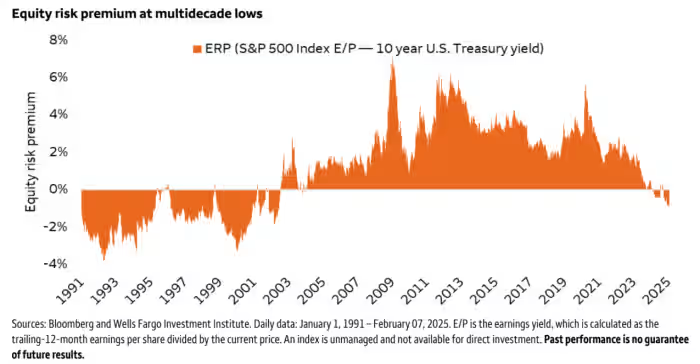Trading Alert: S&P 500’s 50-Day Moving Average Break Could Spell Trouble
The index finished below the average for the first time in almost three years, ending its longest period of not dropping below since March.
Based on the analysis of technical experts, it was observed that the S&P 500 ended below its 50-day moving average on Tuesday for the first time in a few months. This event suggests that there could be additional drops in the index, signaling that the ongoing decline in the stock market might persist over the summer.
The SPX index reached its lowest point since July 11 on Tuesday, according to data from FactSet. It dropped by 51.86 points or 1.2% during the session, steadily decreasing throughout the day.

As per Dow Jones Market Data, this occurrence holds significance as it marks the first time since March 28 that the index has fallen below its 50-day moving average. The 50-day moving average is closely observed as an indicator of momentum. Prior to this event, the index had maintained a streak of 96 consecutive closes above the 50-day, which was the longest period since a 102-session streak ended on September 17, 2020.
As per technical analysts, the S&P 500 ended Tuesday below its 50-day moving average, a situation not seen since March. This suggests that the index may experience more losses, implying that the ongoing decline in the stock market may not have concluded yet.
Based on information from FactSet, the SPX index finished Tuesday at 4,437.86, which was a decrease of 51.86 points or 1.2%. This closing level was the lowest it had been since July 11, as it continuously dropped throughout the session.
Based on information from Dow Jones Market Data, the index recently fell below its 50-day moving average for the first time since March 28. This metric is important for measuring momentum. Prior to this, the index had maintained a streak of consistently closing above the 50-day average for 96 days, which was the longest streak since September 17, 2020, when a 102-session streak came to an end.
Meanwhile, the Nasdaq 100 NDX, which has been the best-performing major stock index in the United States this year, faced a drop for the second straight week. This marks the first instance since December that the technology-focused Nasdaq 100 has encountered consecutive weekly losses.
Experts have indicated that the recent fall below the 50-day threshold is a another indication that stocks are expected to face more downward movement in the near future.
Katie Stockton, a market strategist and the creator of Fairlead Strategies, points out that several momentum indicators have deteriorated over the past few weeks as stock prices have fallen.
Stockton, during a phone interview with MarketWatch on Tuesday, stated that he believes the ongoing corrective phase could extend for a considerable duration, potentially lasting a few weeks instead of multiple months.
Additionally, there are individuals who agree with the aforementioned perspective. Market analysts express particular concern over historical seasonal trends that they anticipate will persist in exerting downward pressure on stocks until September concludes.
Based on Dow Jones data, the S&P 500 historically performs poorly in September, making it the least favorable month for the index since 1928. This data is derived from analyzing returns before the index was established in 1957. On average, stocks tend to decline by over 1.1% during September. However, August is seen as an average month for the index, with a moderate gain of 0.67%. This positions August as the fifth-worst performing month.
Momentum indicators like the 50-day and 200-day moving averages have consistently shown the market’s performance trend since the beginning of 2022. In the past year, whenever the S&P 500 reached or exceeded its 200-day moving average, it consistently faced a decline shortly afterward.
Financial experts have strongly emphasized that there is still plenty of room for the S&P 500 to decrease substantially before they start worrying about the current upward trend being replaced by new record low levels.
During a phone interview with MarketWatch, John Kosar, the chief market strategist at Asbury Research, expressed that there is significant possibility for a market downturn. Nonetheless, he also noted that the overall long-term trajectory remains steady.
Ari Wald, the head of technical analysis at Oppenheimer & Co., and Kosar stated that the S&P 500 has a notable point of support at 4,325. This level is similar to the previous peaks seen in August 2022.
In English, the paragraph can be paraphrased as follows: As stocks progress, it is anticipated that they will receive assistance when they reach 4,200. If the price continues to decrease, reaching 4,100 would be the ultimate threshold that may hinder any further decline. Yet, should the price fall below 4,100, analysts will need to reconsider the long-term pattern that initiated on October 12. On this date, FactSet reported that the S&P 500 hit its lowest closing point in a year, at 3,577.03.
Experts opine that the recent fall in stock prices should not be seen as a setback, but rather as an opportunity for investors to acquire stocks at more favorable prices down the line.
Kosar stated that the market had become too stretched, but he is optimistic about a decrease in excessive excitement in the market. He believes this will provide a good opportunity to buy during the fourth quarter.
Undoubtedly, the rise in Treasury yields is making people in the financial hub of Wall Street anxious. If this continuing trend of higher long-term yields persists, it could result in situations that bring about a more substantial and intense drop in stock prices.
The interest rate for the 10-year Treasury rose on Tuesday by 3.9 basis points, reaching 4.220%. This is the highest level it has been in around 10 months.
Kosar mentioned that if the 10-year yield goes beyond 4.333%, the next level above it would be around 5%. This increase is unpredictable and creates uncertainty. The 4.333% mark is similar to the highest point the 10-year yield has reached in more than 15 years, which happened in October.




